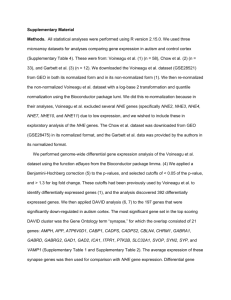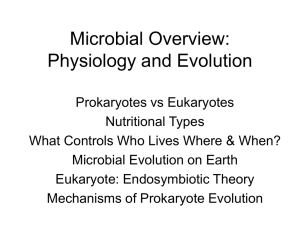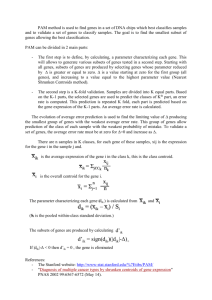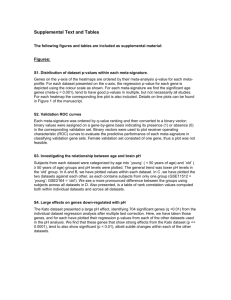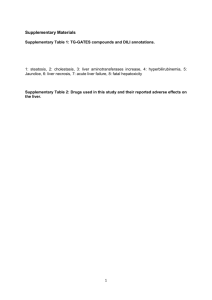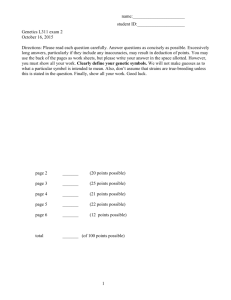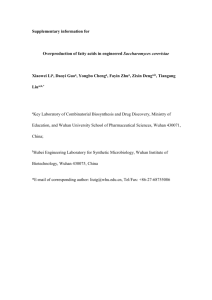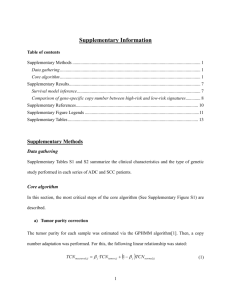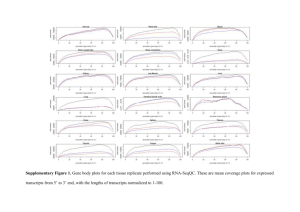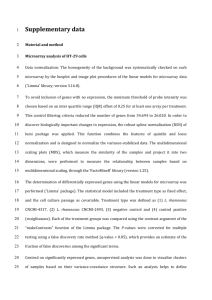Supplementary Legends
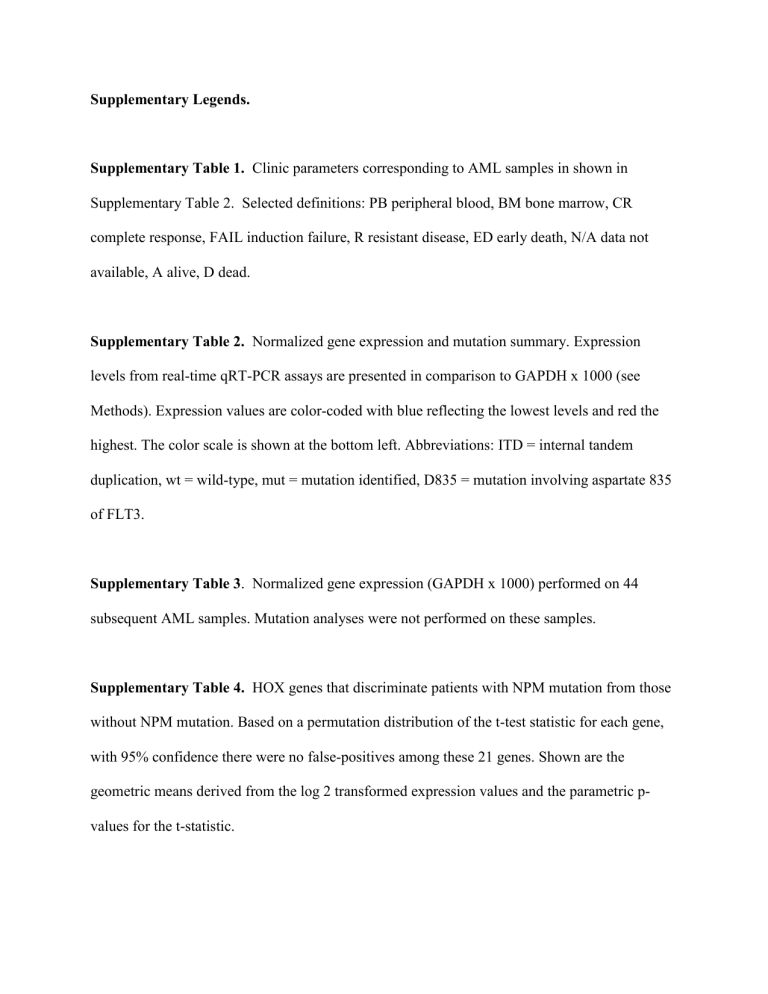
Supplementary Legends.
Supplementary Table 1.
Clinic parameters corresponding to AML samples in shown in
Supplementary Table 2. Selected definitions: PB peripheral blood, BM bone marrow, CR complete response, FAIL induction failure, R resistant disease, ED early death, N/A data not available, A alive, D dead.
Supplementary Table 2.
Normalized gene expression and mutation summary. Expression levels from real-time qRT-PCR assays are presented in comparison to GAPDH x 1000 (see
Methods). Expression values are color-coded with blue reflecting the lowest levels and red the highest. The color scale is shown at the bottom left. Abbreviations: ITD = internal tandem duplication, wt = wild-type, mut = mutation identified, D835 = mutation involving aspartate 835 of FLT3.
Supplementary Table 3 . Normalized gene expression (GAPDH x 1000) performed on 44 subsequent AML samples. Mutation analyses were not performed on these samples.
Supplementary Table 4.
HOX genes that discriminate patients with NPM mutation from those without NPM mutation. Based on a permutation distribution of the t-test statistic for each gene, with 95% confidence there were no false-positives among these 21 genes. Shown are the geometric means derived from the log 2 transformed expression values and the parametric pvalues for the t-statistic.
Supplementary Table 5.
HOX genes that distinguish prognostic cytogenetic groups using oneway ANOVA analysis. Listed are individual genes significantly differentially expressed between pairs of major cytogenetic groups. Based on a permutation distribution of F-ratios for each gene, with 95% confidence, there are no false-positives among these 20 genes. Shown are the geometric means derived from the log 2 transformed expression values, the parametric p-values for the F-statistic, and the pairs of cytogenetics groups that each gene can distinguish.
Supplementary Table 6.
HOX genes associated with overall survival. Based on a permutation distribution of the chi-square statistic with 1 df for each gene, with 90% confidence there are no more than 6 false-positives among the first 8 genes. Shown are the hazard ratios based on 2-fold decrease in gene expression and their respective p-values for the chi-square statistic.
Supplementary Table 7 . HOX genes that are associated with response to treatment. Based on a permutation distribution of the t-test statistic for each gene, with 95% confidence there are no more than 6 false-positives among the first 11 genes. Shown are the geometric means derived from the log 2 transformed expression values and the parametric p-values for the t-statistic.
Supplementary Table 8 . Genes differentially expressed between six UNFAV pts with 11q23 rearrangements and the other 39 UNFAV patients. Thirteen genes have parametric p values <
0.05. Based on a permutation distribution of the t-test statistic for each gene, with 95% confidence, HOXA1 and MEIS2 are not false-positives. Shown are the geometric means derived from the log 2 transformed expression values and the parametric p-values for the t-statistic.



